Apart from the Opera House and Harbour Bridge, Taronga Zoo was the one attraction in Sydney that I most looked forward to. Open since 1916, it sits on roughly 52 acres of land and boasts a diverse collection of mammals, birds, and reptiles housed in often spectacular, spacious exhibits. I’ve made it a point to visit local zoos on all our trips, and with Australia being home to so many unique animals, this was one zoo that I didn’t want to miss.
Located just 12 minutes from the city by ferry, we hopped on a Captain Cook Cruises ferry from Circular Quay for AUD 50.50 per person. This included entrance to the park as well as a return ticket. It was a wee bit pricey for us Filipinos, but considering that I got to observe a few animals that I had never seen before like the prehistoric tuatara, the frighteningly massive leopard seal, and the iconic, almost comical Tasmanian devil, I’d say that it was money well spent. And besides, any cent that goes towards the conservation of animals (and the planet in general) is always cool by me.
After hopping off the ferry, we jumped into one of these cable cars to enter the park. The Jurassic Park theme song started playing in the cab which got me really pumped up. Turns out it was just my brother Erwin humming the tune.
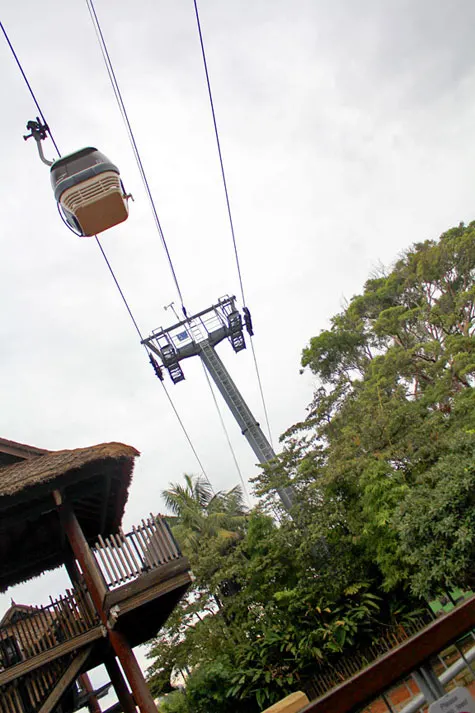
Amphibians
Southern Corroboree Frogs – Pseudophryne corroboree – Found only high up in the Snowy Mountains of Kosciusko National Park, this stunningly beautiful frog is one of Australia’s most endangered species. “Corroboree” is an Aboriginal term meaning a gathering of tribes, in which tribesmen would often paint their dark skin in bold yellow patterns.
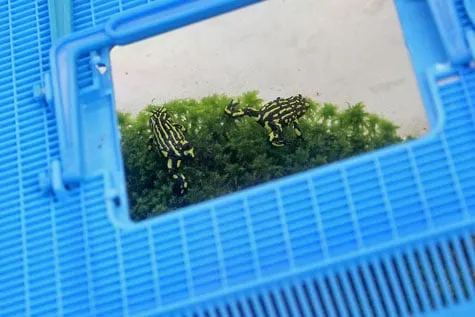
I’m not sure, but I think this was a green tree frog.

This one may have been a “Dumpy”, also known as a White’s tree frog.

Red-Eyed Tree Frog – Litoria chloris – Though this specimen wasn’t as brightly marked, red-eyed tree frogs are usually spectacularly colored, with a uniform bright green above, occasionally with yellow spots, and bright yellow on the underside. The thighs may be blue/purple to blue/black in adults. It has golden eyes at the centre, which change to red towards the edge of the eye.
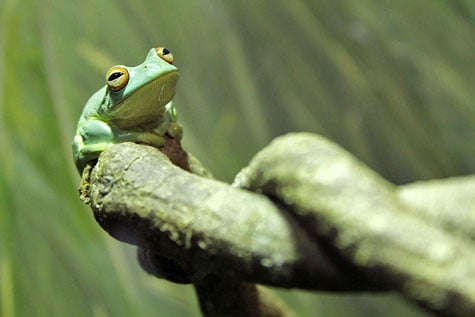
Reptiles
Central Bearded Dragon – Pogona vitticeps – One of the most commonly kept pet lizards, the central bearded dragon has a great personality and comes in many different designer morphs.
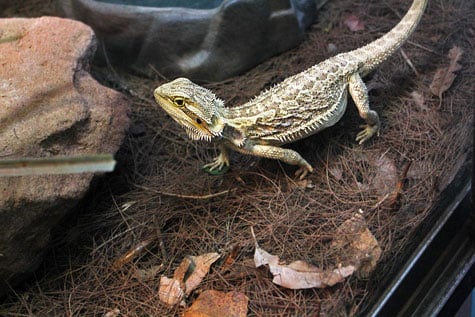
Desert Death Adder – Acanthophis pyrrhus – As its common name suggests, the desert death adder is a highly venomous snake. With the rest of its body hidden beneath leaves or soil, it lures its prey by raising and twitching the tip of its tail as seen below. Wicked.
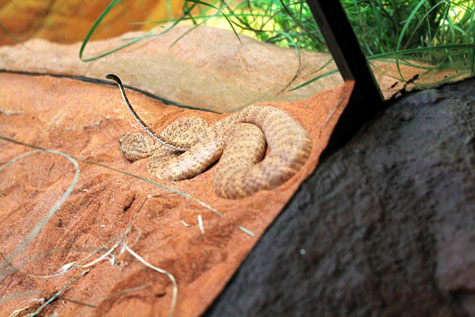
Green Anaconda – Eunectes murinus – Along with the reticulated python, the green anaconda is one of the world’s longest and heaviest snakes, growing to an adult size of 22 ft and 215 lbs. Together with the shark or crocodile, this is probably one of the last things in the world that you’d want to be caught dead in the water with. Scary!
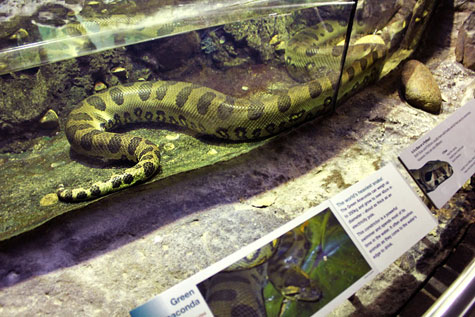
Scheltopusik – Pseudopus apodus – Though it resembles a snake, the scheltopusik is actually Europe’s largest legless lizard. It has movable eyelids, prominent ear openings, a short body and a long tail, and it feeds on insects, slugs, and snails. It’s also commonly known as a “glass lizard” or “glass snake”, because like geckos and lizards, it can display caudal autotomy and drop its tail to escape predators.
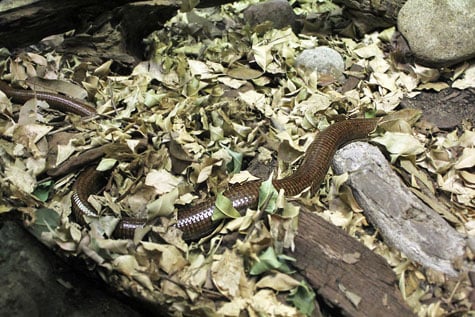
Taipan – Oxyuranus scutellatus – One of the most venomous snakes in the world, it’s also credited as being the Philippines’ wealthiest tycoon. Oh sorry, that’s a different taipan.
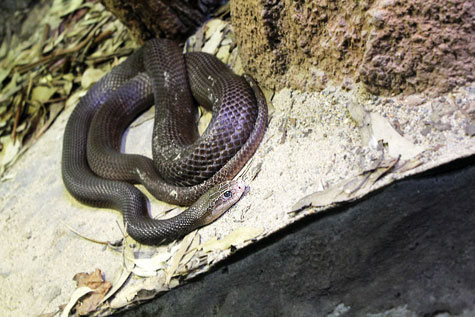
Tawny Crevice Dragon – Ctenophorus decresii – The males of this species are known for their spectacular defensive displays. They defend their territory by moving their hind legs up and down while waving their front legs in a circle and bobbing their heads vigorously. Sounds like me dancing.
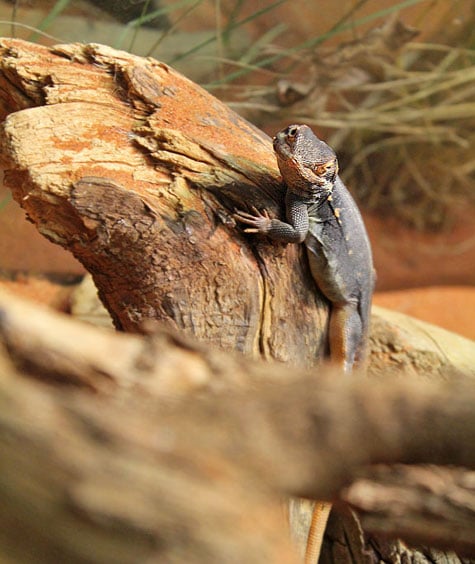
Tuatara – Sphenodon punctatus – Apologies for the crappy picture, but he refused to move so I had to settle for this. I had only previously read about this facinating creature so it was a real treat to actually see one up close.
Though resembling a lizard, tuataras are more closely related to reptiles from the dinosaur era than to present day lizards. Found only in New Zealand, the two species of tuatara are the only surviving members of the order Sphenodontia, which flourished around 200 million years ago.
Their most unusual feature is the pronounced photo-receptive eye (dubbed the “third eye”) whose current function, though not entirely certain, is thought to be involved in setting circadian and seasonal cycles. Their eggs, which they bury in underground nests, take over a year to hatch – far longer than any other reptile.
This, my friends, is probably as close to a living, breathing dinosaur as you’ll ever get. Frikking awesome.
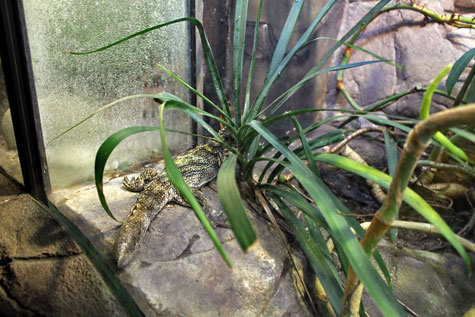
Birds
Shots from the awesome bird show. Check out the spectacular view of the harbour and Opera House.
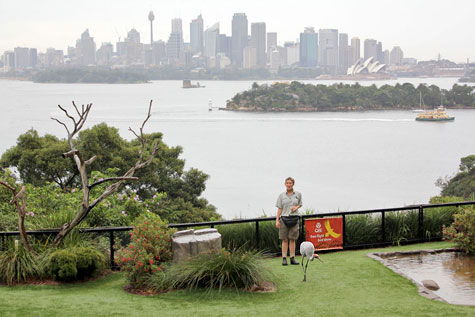
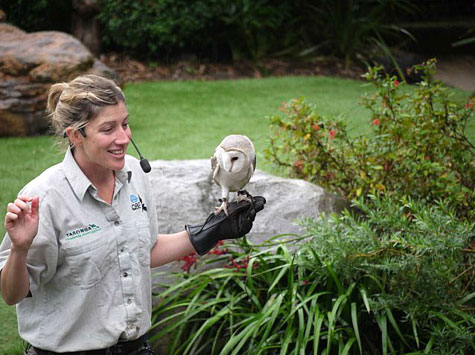
If I remember correctly, this bird cracking that egg with a rock was some type of hawk.
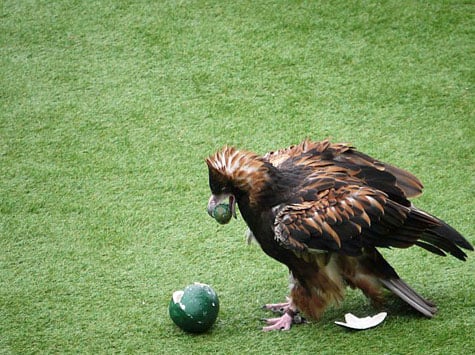
Emu – Dromaius novaehollandiae – The largest bird native to Australia and the second-largest bird in the world by height, behind only the ostrich.
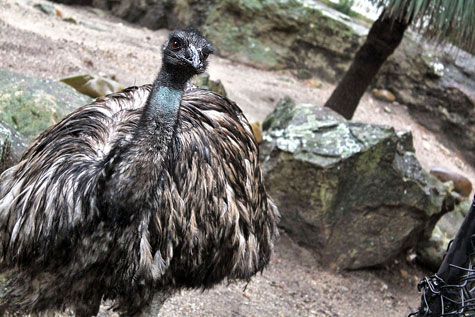
“Emu”, according to Ren, is Bisaya for “EMO”. He kinda looks the part too, doesn’t he?
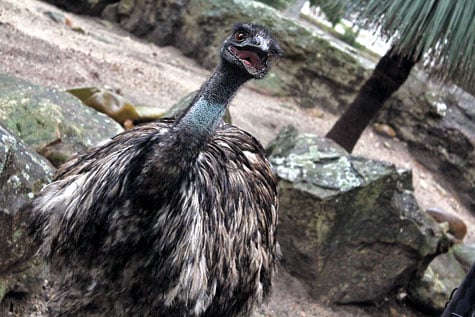
I don’t know what type of bird this was, but it was everywhere, even in downtown Sydney. Even their “maya” birds are fancy down under. 😆 Check our the droplets of rain streaking down on this photo. Great shot Erwin!
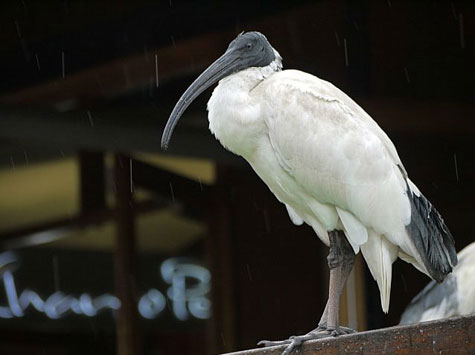
Insects
Macleay’s Spectre – Extatosoma tiaratum – This thing was wicked cool. A large phasmid endemic to Australia, this stick insect is capable of parthenogenesis, which is a form of asexual reproduction where growth and development of embryos occur without fertilization, aka “virgin births”. Young specimens are particularly difficult to detect in the enclosure as they really do look like dried up twigs and leaves. So cool!

Goliath Stick Insect – Eurycnema goliath – As its common name suggests, the goliath stick insect is one of the largest stick insects in Australia, with the females growing to an adult length of over 20 cm. When threatened, it flicks its hind legs which are covered in sharp spurs that make rattling sounds.
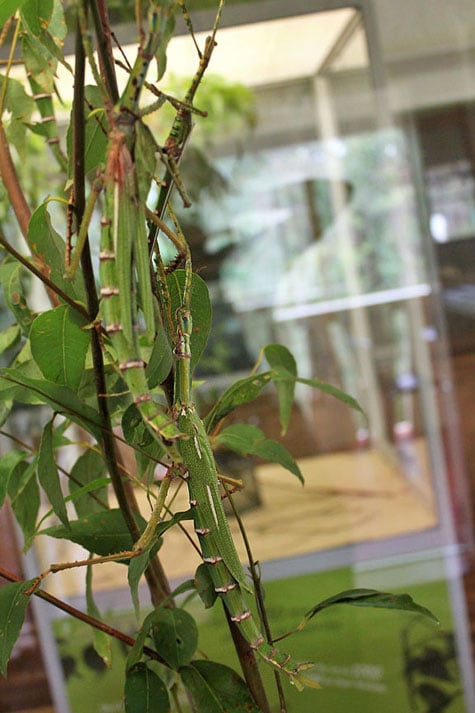
Mammals
A cute, cuddly koala in a familiar pose. They sleep around 20 hours a day so you’ll often find them wedged in trees like this. For an additional AUD 20 per person, you can have a private encounter and photo session with these highly charismatic animals.

G’day mate!
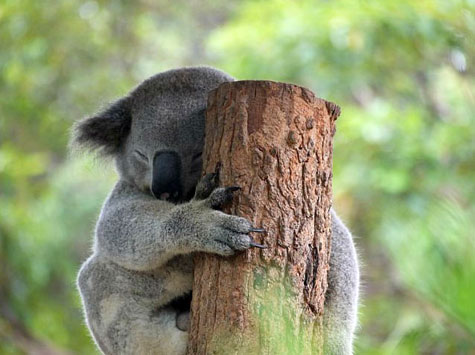
Short-Beaked Echidna – Tachyglossus aculeatus – Also known as the spiny anteater, the four species of Echidna, along with the platypus, are the only five existing monotremes (mammals that lay eggs).

Pygmy Hippopotamus – Choeropsis liberiensis or Hexaprotodon liberiensis – Unlike the common hippopotamus, the pygmy hippo is nocturnal and reclusive. It weighs in at only 400-600 lbs, which is roughly a quarter of its much larger cousin.
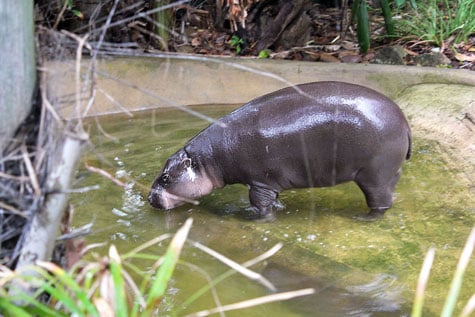
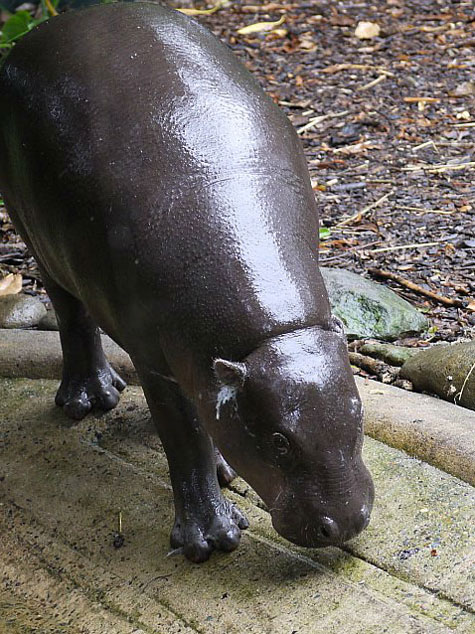
This scene was so cute and endearing. The juvenile kept climbing up the platform and was repeatedly pulled down playfully by the adult in what looked to be a game between mother and child. They did this for several minutes with us captivated the entire time. I love animals.
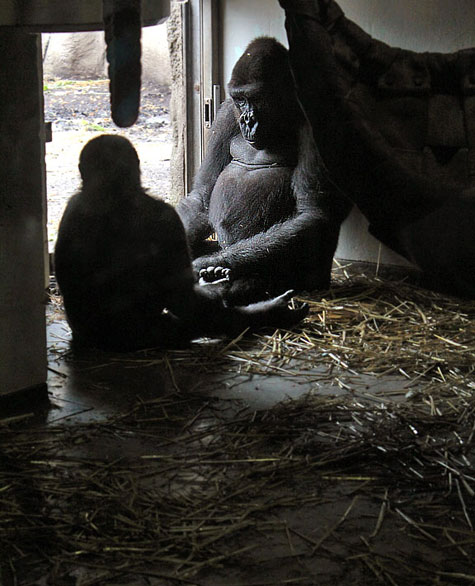
Kangaroo just chillin’.

A scene from the elephant show. Isn’t that little baby cute?
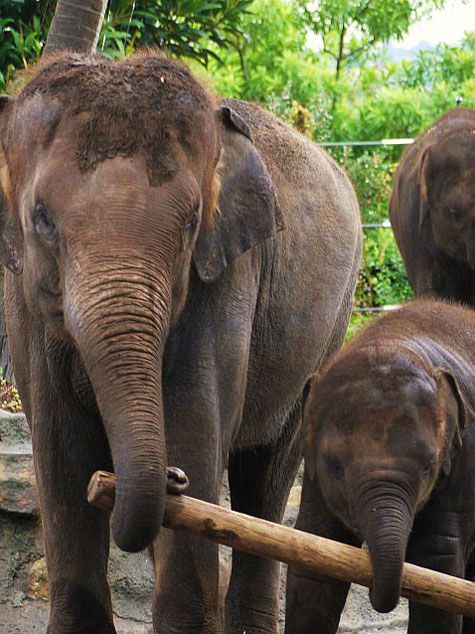
The striking Malayan Tapir (Tapirus indicus) and…
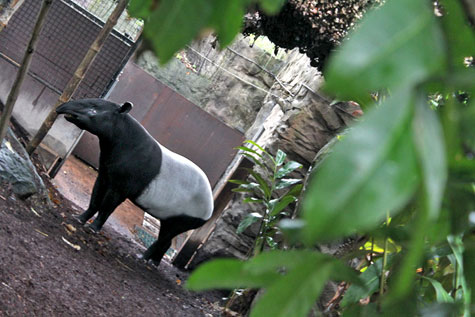
…its homelier cousin the Brazilian Tapir (Tapirus terrestris). “Hey!…”
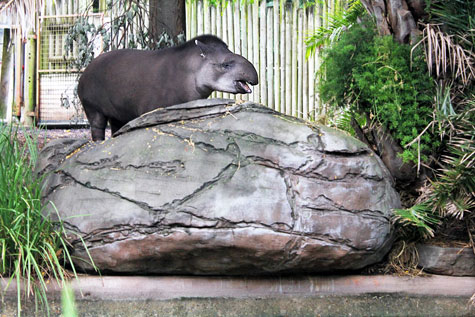
This exhibit of Himalayan Tahrs (Hemitragus jemlahicus) was spectacular.
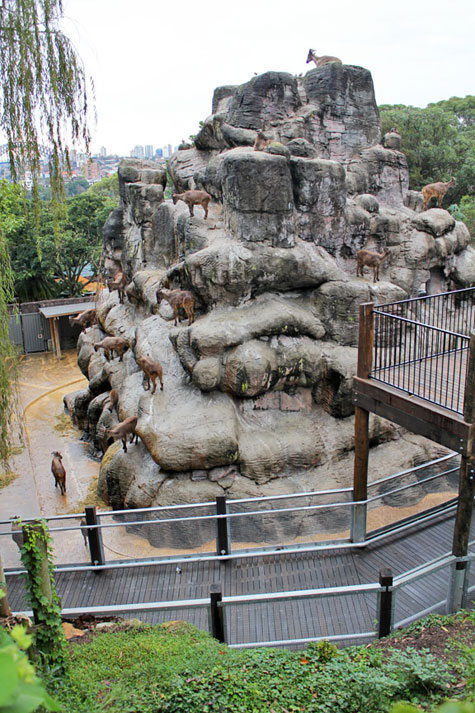
Now THAT’s what I call a view. Spectacular indeed!
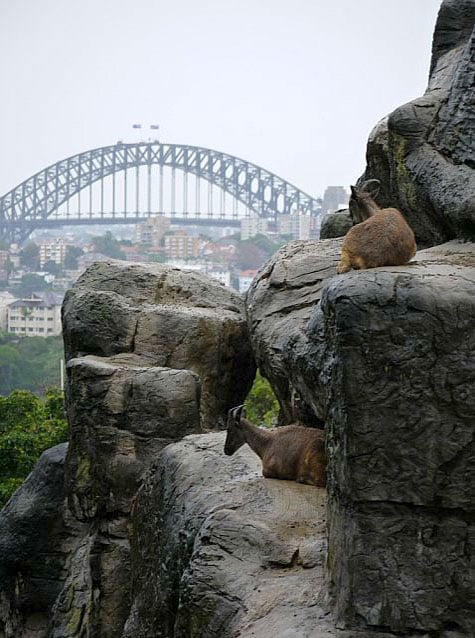
Sumatran Tigers
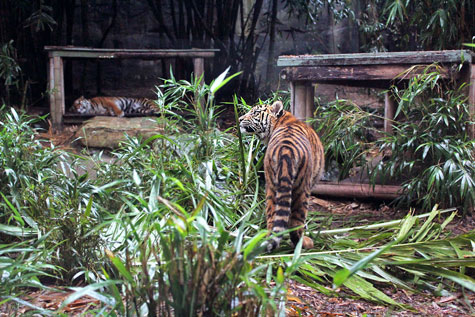
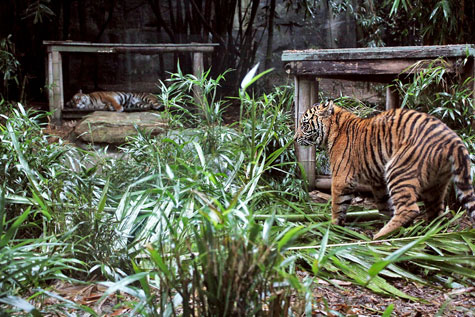
Chimp chompin’ on some carotene.
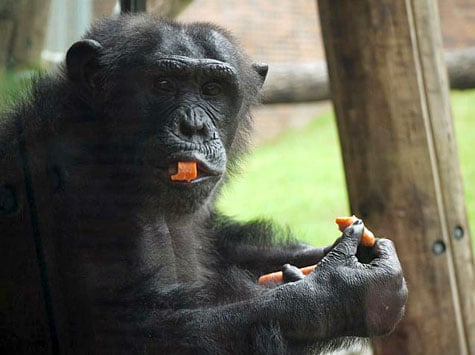
A cute, hyper little river otter

Seal Cove

Leopard Seal – Hydrurga leptonyx – My first time seeing this animal outside the “Happy Feet” movie, I was astonished by its sheer size. Growing to an adult length of almost 12 ft and weighing in at 1,300 lbs, this is one seal that you don’t want to mess with.
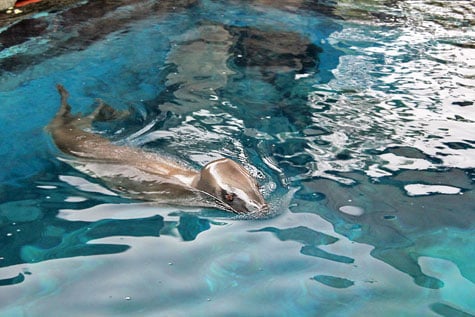
Snow Leopard – Panthera uncia or Uncia uncia – Truly one of the rarest creatures, the snow leopard is an infrequently seen animal that lives in the harsh, rugged mountains of Central Asia. Despite its low numbers in the wild, these beautiful animals are still hunted for the illegal fur trade and for their habit of preying on domestic livestock.
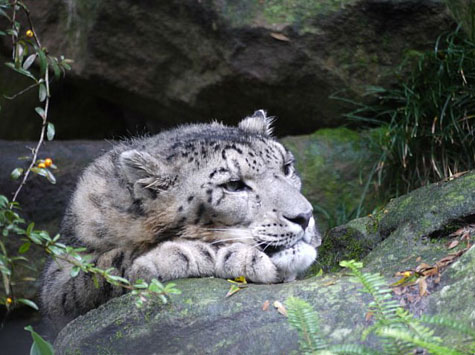
Red Panda – Ailurus fulgens – Slightly larger than a domestic cat, the red panda is a small arboreal mammal native to the eastern Himalayas and southwestern China. Cute little dude, huh?
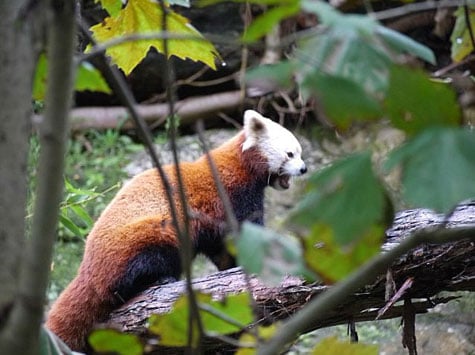
Tasmanian Devil – Sarcophilus harrisii – A carnivorous marsupial now found only on the Australian island state of Tasmania. Stocky, muscular, and the size of a small dog, it is the largest carnivorous marsupial and an iconic symbol of Tasmania.
Watching these guys growl and circle continuously atop these tree stumps made me understand where the inspiration for Taz’s whirlwind-like, gibberish-speaking personality came from. 😆
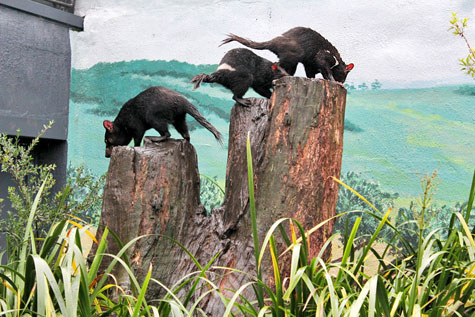
Sadly, wild populations of Tasmanian Devils have been devastated since the late 1990s by a disease known as devil facial tumor disease. It now threatens the survival of the species, leading the IUCN to declare the Tasmanian Devil as endangered in 2008. Programs are currently being undertaken by the Government of Tasmania to reduce the impact of the disease, including an initiative to build up a group of healthy devils in captivity, isolated from this devastating illness.
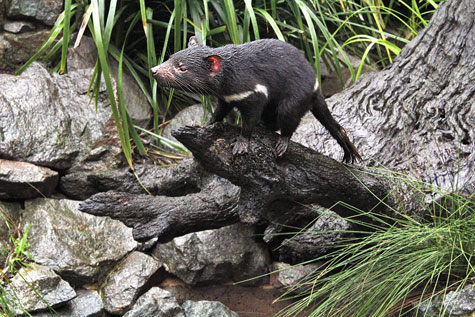
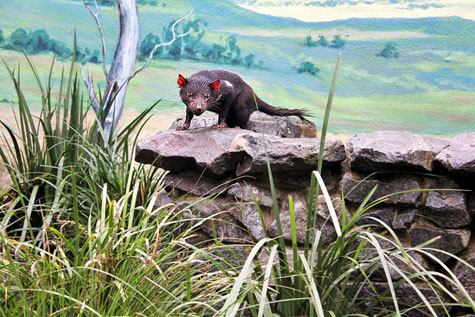
This was an impressive zoo, though admittedly not the best that I’ve visited. I’m a herp lover but there unfortunately weren’t as many amphibians nor reptiles as I would have liked. In fact, there were actually very few amphibians on display. Some newts, salamanders and more frogs, particularly dendrobatids, would have been nice.
If I’m not mistaken, they didn’t have many (if any) small primates such as marmosets and lemurs either. Seeing more of those, along with other smaller terrarium animals, would have been cool as well. I know that a lot of the animals I just mentioned aren’t found in Australia, but hey, we don’t have them in the Philippines either but you can still see many of them at Avilon Zoo.
With that said however, some of the unique animals they had on display here like the tuataras, corroboree frogs, koalas, and Tasmanian devils are creatures that you won’t find in many zoos, so getting the opportunity to observe them for the first time was a fascinating experience. I just wish that you didn’t have to pay so much to get up close and personal with the koalas. As mentioned up top, the AUD 50.50 entrance fee was steep enough, especially for us peso-earning Pinoys.
Despite my personal wish list however, this was a great zoo nonetheless and one you’d be pleased to reserve a day for should you ever find yourself in Sydney. Please visit their website for more information. If I’m not mistaken, you can get discounts on entrance fees as well if you book your tickets online.
More on Sydney
Opera House and Harbour Bridge, Sydney, Australia
Blue Mountains, New South Wales, Australia
Bondi Beach, Sydney, Australia
Sydney Aquarium, Darling Harbour, Australia
Featherdale Wildlife Park, Sydney, Australia
Sydney Fish Market, Australia
Powerhouse Museum, Sydney, Australia
